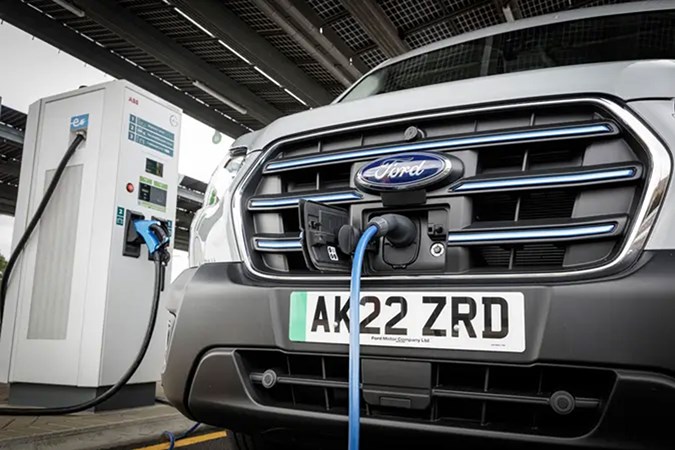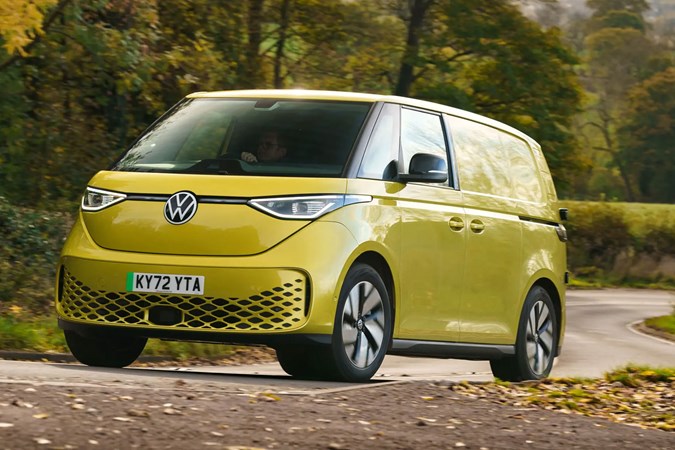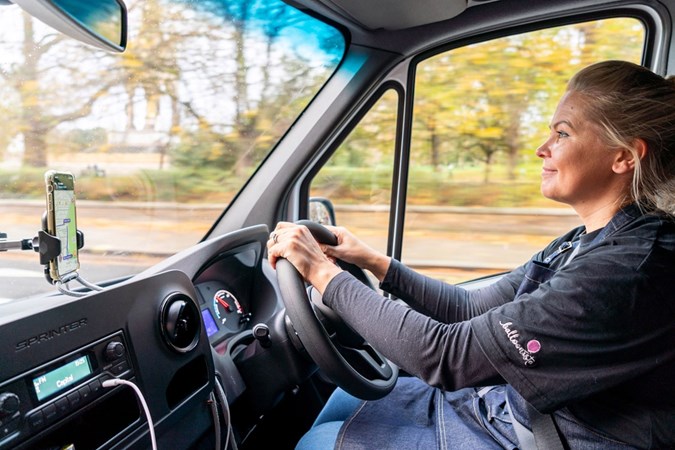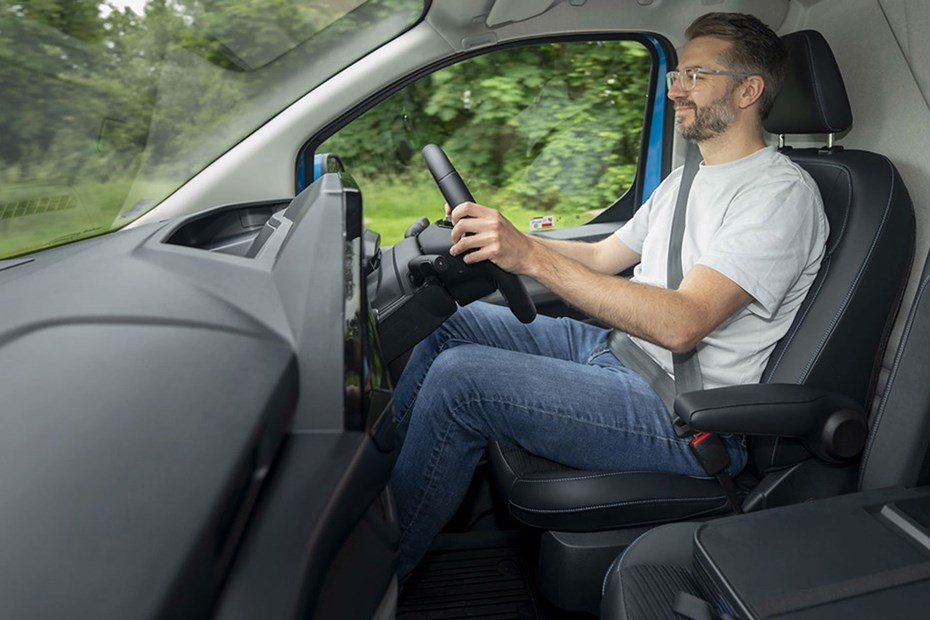Looking for the latest information on van tax? With 2025’s new tax rates rates up and running, Parkers breaks down everything you need to know. We cover how much vehicle excise duty (VED) – or road tax – you’ll pay for your van, benefit-in-kind (BIK) tax rates and the latest on how pickup trucks are taxed.
Van tax is both simpler and generally cheaper than car tax, but that doesn’t mean changes introduced by Chancellor Rachel Reeves in 2024’s Autumn Budget haven’t caused controversy. The big news is changes to the tax rules surrounding double-cab pickup trucks, which are now taxed as cars when it comes to capital allowances and benefit-in-kind.
The 2024 Budget statement also announced an increase to the van benefit and fuel benefit charges. However, since these are simply in line with Consumer Price Index (CPI) inflation, the hikes aren’t a massive shock even though they were previously frozen.
Electric van tax has also changed, although that was announced before the Autumn Budget. Previously, tax was £0 to encourage adoption, but electric vans are taxed at the same rate as petrol and diesel vans. However, the Budget also confirmed that the plug-in van grant will continue in 2025/2026, with £120 million allocated to discount the purchase price of electrified vans.

Van VED rose in line with Retail Price Index (RPI) inflation on 1 April 2025. While there’s a hefty increase for electric vans, van owners generally still get a better deal than many car owners as they’re all charged the same tax rate, regardless of their vehicle’s size and CO2 emissions. So tax costs the same whether it’s a small, medium or large van.
All of these changes were announced in the 2024 Budget; this article has been updated several times since, including after the Chancellor’s 2025 Spring Statement, though nothing new was announced in it.
How much does pickup truck road tax cost in 2025?
This was the biggest, most controversial news in 2025. In essence, double-cab pickup trucks are now treated differently by two government agencies that collect VED and benefit-in-kind company car tax –the DVLA and HMRC, respectively.
The DVLA works off European vehicle classifications. Most pickup trucks carry an N1 classification, therefore they incur the same flat-rate VED charge as any other light goods vehicle weighing up to 3,500kg. However, HMRC takes the view that any pickup with two rows of seats, or an extended cab with extra storage space behind the front seats, is primarily designed to carry passengers, not cargo.
Any such pickup truck now bought new is subject to the same BIK rates as cars, which are based on CO2 emissions. That could be a problem for many users because pickups have pretty high CO2 emissions, indeed the majority are in the top 37% BIK rate bracket, which translates to an annual charge not far short of £10,000 for a 40% income tax payer. By contrast, BIK on pickup trucks was previously charged at a flat rate that cost less than half the new rates.
You can avoid the higher rates by getting a pickup with a single row of seats, or reduce the impact by getting an electric pickup or the new plug-in hybrid Ford Ranger.

What happens if I already have a double-bed pickup truck?
If you already use a double-cab pickup as your company car or have one on order, don’t panic. A transition period was in place for brand-new pickups bought, leased, or ordered before 6 April 2025. They will be taxed at the previous rates until 5 April 2029.
The other good news is that HMRC will allow you to transfer the lease from one employee to another in that period too. That means if you have a pickup being run by an employee who’s paying the commercial vehicle rates and leaves the company, their pickup can be reassigned to another employee and stay at the same BIK level. It’s the lease that counts, not the person.
An HMRC spokesperson told our sister publication Fleet News: “If an employer transfers a double cab pick-up to another employee between 6 April 2025 and 5 April 2029, they may continue treating it as a van for tax purposes, provided there is no disposal, and the lease has not ended.”
How much does van road tax cost in 2025?
Vehicle Excise Duty or VED – colloquially known as road tax – is set at a flat rate for vans and pickups. It rises in line with inflation. As of 1 April 2025, the charge is £345 per year – an increase of £10 on 2024/25’s rate.
VED is collected by the Driver and Vehicle Licensing Agency (DVLA). You can pay for six or 12 months in a one-off payment, or monthly via Direct Debit – there’s a small price premium for doing so. The tables below show what rates apply to which vehicles.
Note there are lower rates for certain vans that meet Euro 4 and Euro 5 emissions regulations. They were put in place to encourage adoption of those vehicles but were later rescinded. However, the vans covered by the lower rates still get a discount.
| Vehicle Type | 12 months by one-off payment | 6 months by one-off payment | 12 months by Direct Debit | 12 monthly installments by Direct Debit | 6 months by Direct Debit |
|---|---|---|---|---|---|
| Vehicles registered on or after 1 March 2001 (including zero emission vehicles) | £345.00 | £189.75 | £345.00 | £362.25 | £181.13 |
| Vehicle Type | 12 months by one-off payment | 6 months by one-off payment | 12 months by Direct Debit | 12 monthly installments by Direct Debit | 6 months by Direct Debit |
|---|---|---|---|---|---|
| Euro 4 vehicles registered between 1 March 2003 and 31 December 2006 (including zero emission vehicles) | £140.00 | £77.00 | £140.00 | £147.00 | £73.50 |
| Vehicle Type | 12 months by one-off payment | 6 months by one-off payment | 12 months by Direct Debit | 12 monthly installments by Direct Debit | 6 months by Direct Debit |
|---|---|---|---|---|---|
| Euro 5 vehicles registered between 1 January 2009 and 31 December 2010 (including zero emission vehicles) | £140.00 | £77.00 | £140.00 | £147.00 | £73.50 |
Does the cost of van tax vary?
As the tables above show, all vans registered on or after 1 March 2001 – when the ‘Y’ number plate prefix was introduced – are charged at a flat rate. Lower rates are applied to certain vans that meet Euro 4 and Euro 5 emissions regulations. Those rates were put in place to encourage people to buy less polluting vehicles. Though the incentives were eventually rescinded, the lower VED rates still apply to those vehicles. By contrast, cars registered from 1 March 2001 are taxed according to their CO2 emissions. Vans – and cars – registered before that date are taxed according to their engine size, as seen in the table below.
Road tax cost for vans registered before 1 March 2001:
| Vehicle Type | 12 months by one-off payment | 6 months by one-off payment | 12 months by Direct Debit | 12 monthly installments by Direct Debit | 6 months by Direct Debit |
|---|---|---|---|---|---|
| Not over 1549cc | £220.00 | £121.00 | £220.00 | £231.00 | £115.50 |
| Over 1549cc | £360.00 | £198.00 | £360.00 | £378.00 | £189.00 |
What counts as a van for tax purposes?
Van VED rates generally apply to all light commercial vehicles (LCVs) – including pickup trucks – up to 3,500kg ‘revenue weight’. There are some exceptions, so the surest way to tell if your vehicle qualifies for van VED is check its V5C registration document. That has a European classification section. If it’s marked N1 or N2 the vehicle counts as an LCV, so is taxed as a van. If it’s marked M1 or M2, the vehicle is a car, not a commercial, and is subject to car VED rates instead.
How much does electric van road tax cost in 2025?
Taxing an electric van used to be free, but that changed on 1 April 2025. It’s now in line with petrol and diesel vans, meaning the rate is £345 per year. This rule has also been backdated to include all zero-emission vans registered from March 2001. In short, other than a handful of classic electric vans, all now incur the £345 annual charge. There’s also no van fuel benefit charge available for electric vans as, according to the government’s official documentation, ‘electricity is not a fuel.’

Van benefit-in-kind tax
Benefit-in-kind (BIK) is the tax you pay on something that’s provided by your work but also a benefit to you. BIK is collected by HM Revenue and Customs (HMRC) rather than the DVLA and is officially known as the van benefit charge.
How is van benefit tax calculated?
As with road tax, BIK rates are much simpler for vans than cars. All company vans are charged BIK at the same fixed or flat rate: the 2025/2026 van BIK rate is £4,020. That’s an increase of £60 from the 2024/2025 rate in line with CPI inflation rates. It came into effect on 6 April 2025.
This means:
– If you’re a 20% taxpayer, van BIK is £804 per year – £67 per month
– If you’re a 40% taxpayer, van BIK is £1,608 per year – £134 per month
Whether you pay 20% or 40% depends on how much you earn. Either way, that’s a lot less than almost all cars cost.
Do I need to pay BIK on my van?
Because BIK is a tax on benefits, you only need to pay BIK on a van if it’s a benefit to you – which means you’re allowed to use it for ‘private journeys’ rather than just ‘business journeys’. If you only use a company van to go to and from places of work, that’s ‘business use’. But if you take it to the supermarket to do your weekly shopping or go away on holiday, that’s ‘private use’ so you will have to pay BIK.

Within business use rules, ‘insignificant’ private journeys are allowed. Examples include a ‘slight detour’ to buy a newspaper on the way to work or taking a pool van home for the night if you have an early start for work the next morning.
Can I avoid paying BIK on a van?
You can avoid paying BIK for the private use of a company van if you pay your employer for the privilege of using the van privately. Also, one-off trips – such as taking stuff to the local public recycling centre – are exempt from the private use rule. And if you have a company van but can’t use it for more than 30 days in a row, you shouldn’t have to pay BIK on it.
Van fuel benefit charge
If you claim the cost of fuel from your employer for business use only, that’s not a benefit. However, if you claim the cost of fuel for private use, then that is a benefit, and you’ll have to pay the van fuel benefit charge.
The 2025/2026 van fuel benefit charge rate is £769, a raise of £12 which aligns with the Consumer Price Index. As this is the benefit rate:
– 20% taxpayers have to pay £154 – around £12.83 per month
– 40% taxpayers have to pay £308 – around £25.66 per month
Not only is this cheaper than the fuel benefit charge for company cars, the amount can be shared between employees who use the same van.
What’s more, it will also be reduced if:
– You can’t use the van for more than 30 days in a row
– Your employer takes away the private-use fuel provision during the year
– If you pay your employer back for the cost of the private-use fuel
As of 6 April 2025, drivers of double-cab pickup trucks have to pay a car fuel benefit instead, which will almost certainly be more expensive.
Keep records of every journey
The best way to ensure you’re not being unfairly taxed is for you and your employer to keep records of every journey. An increasing number of light commercial vehicles with built-in connectivity aims to make this easier.
Van tax FAQs
-
How to pay van tax
You can tax your van by visiting the Post Office or telephoning the DVLA on 0300 790 6802, or you can tax your van online via the UK government Tax Your Vehicle webpage. To pay online or by phone you will need a debit card or credit card. At the Post Office you can also pay by cash, cheque, or postal order.
You’ll also need one of the following official documents:
-A recent reminder letter (known as the V11) or ‘last chance’ warning letter from the DVLA
-The vehicle logbook (V5C registration document) – which must be in your name
-Green ‘new keeper’ slip from the previous logbook if you’ve just bought the vehicle
If you’re taxing at the Post Office but can’t find your V5C, you can also use a V62 form (the application form for a new V5C logbook). If the vehicle is registered at a Northern Ireland address, you will also have to provide proof of insurance; for the rest of the UK this is now digitised. MOT records are also digitised, but although you won’t have to show an MOT certificate, the vehicle will need to have a valid MOT for the date the tax first starts. -
Is my van taxed?
There’s a UK government website that easily allows you to check if your van is taxed – all you need is the van’s registration number (number plate). You can ask Amazon Alexa or the Google Assistant to find out your vehicle’s tax status as well. Remember, road tax is no longer transferred between owners, so when buying a used van you’ll have to get it taxed before you drive it, just as you have to arrange insurance. Any vehicle that uses the public roads must have valid tax, insurance and MOT. That government webpage can also tell you exactly how much your van tax will cost – but for that you’ll need the V5C registration document as well as the number plate.
-
How to cancel van road tax
If you need to cancel your van tax, you must contact the DVLA by phone, email or even letter. The only exception to this is if you want to register the vehicle as ‘off the road’ using a Statutory Off Road Notification (SORN); this can be done in moments online. You will get a refund on any payment that goes beyond the date of cancellation – such as the remainder of a Direct Debit or the rest of a six- or 12-month term. Depending on how you paid, the refund can take up to eight weeks.
The government lists only the following as reasons you might want to cancel your road tax on your van:
-You sold the van or transferred ownership to someone else
-You’ve taken it off road – using a SORN
-It’s been written-off by your insurance company
-It’s been scrapped – at a vehicle scrap yard
-It’s been stolen – slightly different process but you can still get a refund
-It’s been exported out of the UK
-If it’s been registered as exempt from tax
To quote the government: ‘There is no other way to cancel your vehicle tax.' -
What happens if you don’t pay your van road tax?
Fail to renew your van road tax on time, and you’ll get an automatic £80 fine from the DVLA – though this is halved to £40 if you pay within 28 days. Ignore this and you may end up in court, where the maximum fine is £1,000 or five times the value of the tax you haven’t paid. If the DVLA sees your van parked on the road without tax it may be clamped, and you’ll pay a minimum £100 release fee, plus a (refundable) ‘surety deposit’ of upwards of £160 if you can’t prove it has now been taxed.
You can also be fined if the vehicle is seen off the road without tax or SORN status – and you can be fined if you have declared it SORN but left it parked on the public road. If the police catch you driving a van without tax you’re committing a legal offence and will be subject to a fixed penalty notice (FPN) payable on the spot. This could be as much as £1,000. Police use automatic number plate recognition (ANPR) cameras to detect this kind of thing. Worst case scenario, your van could even be seized and impounded. -
What is a pool van?
A pool van is a van that’s available for use by more than one employee, provided because it’s necessary for the job, and not kept at or near an employee’s home (unless needed early the next day). If your work only gives you access to a pool van then you shouldn’t be paying BIK. If it’s a company van that several employees regularly use for private journeys and keep at their homes overnight, it may not count as a pool van. However, in this instance, the BIK cost would be divided between each of the employees that has access to the vehicle, reducing the individual cost accordingly.
-
What is van revenue weight?
To qualify for light commercial vehicle road tax, your van must have a maximum revenue weight of no more than 3,500kg (3.5 tonnes). Revenue weight is the same as gross vehicle weight (GVW), maximum authorised mass (MAM), permissible maximum weight and maximum laden weight – which are all terms the government uses for the same thing: the total legally allowed weight of the vehicle and everything inside it, including the people.
-
Is a light goods vehicle a van?
Light goods vehicle is indeed another term for light commercial vehicle, and is used in some UK government communications about van tax classes. TC39 and TC36 tax codes/bands are often described as relating to light good vehicles, for example.
-
How can I find out my vehicle’s European classification?
The European classification – N1 or N2 for commercial vehicles, M1 or M2 for cars – can be found on your V5C registration document, also known as the logbook. However, if you need to know and don’t have the V5C to hand, you can also find out via the UK government’s road tax checker website. Once you’ve entered the number plate and confirmed the vehicle make and colour, you’ll find it listed as ‘Vehicle type approval’.
-
Are there any other exceptions to the usual van tax rules?
Other types of vans that cause tax confusion include car-derived vans, commercial 4x4s, and — especially — vans with more than one row of seats, such as double-cab vans, combi vans, kombi vans, and crew vans. Again, it’s easy to check the road tax cost of these using the European classification on the V5C logbook – N1 or N2 type approval means they count as a commercial vehicle for VED purposes, while M1 or M2 means they’re classed as a car.
Things get trickier when it comes to BIK, especially for vans with multiple rows of seats. To meet the definition of a van HMRC uses to decide benefit-in-kind, the vehicle has to be a ‘goods vehicle’ – which means ‘a vehicle of construction primarily suited for the conveyance of goods or burden.’ Car-derived vans (CDVs) and commercial 4x4s should be fine with this because they only have a single row of seating, and the rest of the vehicle interior is converted for carrying goods and appropriate bodywork. For example, the former Ford Fiesta Van does qualify for van BIK rates.
The problem for panel vans with more than one row of seating is that they have effectively switched from goods vehicle to passenger vehicle. A high-profile Court of Appeal ruling in August 2020 confirmed as much, and has made the van status of all crew and combi models very much in doubt as far as the HMRC is confirmed. Some argue that as long as the van has only two rows of seating and maintains a payload rating of over 1,000kg, then it’s still primarily a goods vehicle under the same ‘dual-purpose’ rules that double-cab pickups use. But given HMRC’s appetite for court action regarding the misclassification of these vehicles , you’re better off playing it safe and treating them as cars as far as BIK is concerned.
Just so you know, we may receive a commission or other compensation from the links on this website - read why you should trust us.












